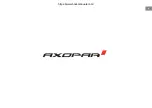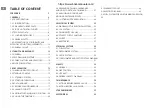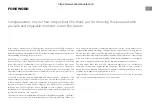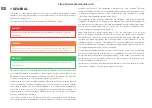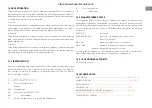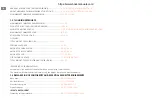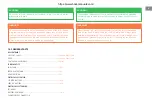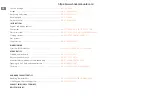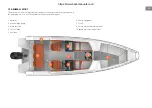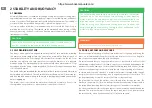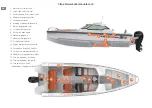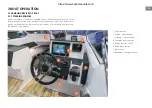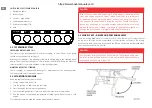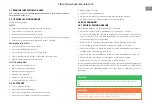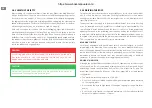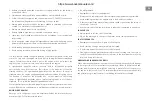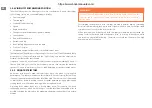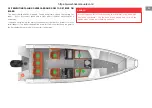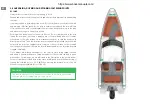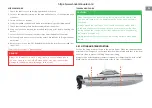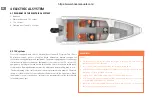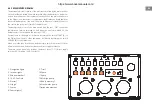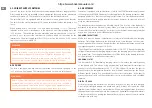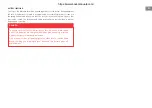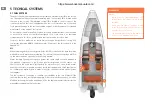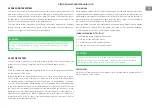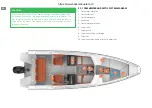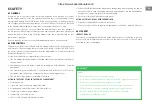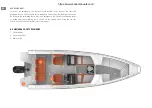
Never step onto the swim ladder when the engine is running. Stop the
engine while inspecting the steering and propeller.
WARNING!
3.3 REGULAR INSPECTION FOR USER
Due the safety reasons following inspections have to be made for the boat
before and after the use:
3.3.1 BEFORE LEAVING HARBOUR
Check following things:
SAFETY
• Ensure that all people onboard has own life jacket.
• Sea condition is sufficient for your boat.
• Dead man´s switch is switched to driver.
• Ensure that you have fire extinguisher(s) onboard and they are not expired.
• Ensure that you have needed ropes and anchor onboard.
DRAINING AND TIGHTNESS:
• Check that there is no water on bilge.
• Check that all bilge pumps work.
• Check that there are no fuel or oil leaks, bilge.
• Check that deck drain system is clean and valves are open.
• Every All deck hatches are closed tightly.
ELECTRIC AND ENGINE:
• Every fuses are lower position.
• Main switches are switched on.
• Batteries have enough power.
• Engine works properly.
• Engine cooling water flow.
• You have enough fuel onboard.
3.3.2 AFTER USE
• Check following things:
• Main switches are switched off.
• Sea-cocks of septic tank and toilet seat are closed.
• Ensure that direct supply switches are switched on.
• Bilge is empty of water.
• Function of every bilge pumps.
• Deck drainings works properly and every draining valves are open.
• All deck hatches, roof canvas and doors are closed tightly.
3.4 BOAT HANDLING
3.4.1 BEFORE LEAVING HARBOUR
Before leaving harbour it is important to note following:
• Check that the boat and its equipment are in seaworthy condition.
• All persons on board should wear an appropriate life vest when on deck. Note
that, in some countries, it is a legal requirement to wear a life vest in accordance
with national regulations at all times.
• Always listen to long-term weather forecasts when planning longer trips.
• Always make sure there is enough fuel and freshwater in the tanks.
• Check that all items on board are properly stowed and adequately secured to
manage rough sea and wind conditions.
• Make sure that the swim ladder is raised out of the water before moving off.
• Make sure that the steering is correctly positioned before starting
• Always brief your crew on how you plan to leave the jetty.
For safe navigation under all weather conditions, proper sound signalling equipment
in compliance with regulations (COLREG, 1972) must be carried on board. Make
sure that the sound signalling equipment on your boat is compliant with these
regulations.
Even a non-slip moulding can be slippery to walk on when the deck is
wet.
CAUTION!
17
https://www.boat-manuals.com/
Содержание 24 HT 2016
Страница 1: ...AXOPAR 24 HT OWNER S MANUAL https www boat manuals com ...
Страница 2: ...https www boat manuals com ...
Страница 3: ...3 https www boat manuals com ...
Страница 35: ...9 3 FUEL SYSTEM FOR NORTH AMERICAN REGION 35 https www boat manuals com ...
Страница 36: ...https www boat manuals com ...
Страница 37: ...37 https www boat manuals com ...
Страница 38: ...38 https www boat manuals com ...
Страница 39: ...39 https www boat manuals com ...

